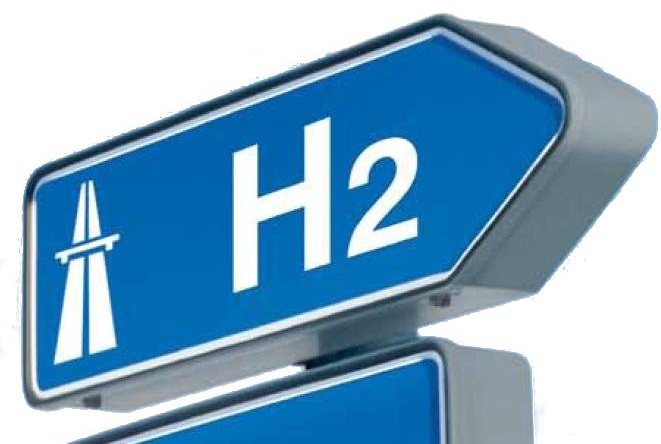This is how Enel works on hydrogen in Chile

Enel's foreign moves on hydrogen also pass through Chile. Here's how
Germany is betting strongly on hydrogen and is a candidate to become the driving force in Europe for the sector. The German government's economic stimulus package includes 7 billion euros for the commercialization of green hydrogen technologies, plus another 2 billion for the promotion of international partnerships.
THE PROJECT IN CHILE
The first fruits of this plan are starting to show: Siemens Energy, the Porsche sports car manufacturer, and several international companies including Enel have in fact given the green light to the construction of a pilot project in southern Chile to use the green hydrogen produced from wind energy to the production of synthetic fuel, according to the RechargeNews website.
Enel together with the Chilean electricity company AME and the oil company ENAP in October had already unveiled plans for the Cabo Negro plant in the Strait of Magellan, at the southern end of South America, which will be the first in the world to produce e-fuels on an industrial scale. But the project was still awaiting the last permits from local authorities at the time.
The owner of the project is the hif (highly innovative Fuels) partnership between Enel green power Chile, the Chilean electricity company Ame and the state-owned company Enap, together with the Siemens energy and Porsche groups.
Siemens Gamesa will supply the wind turbines to the project, while Siemens Energy's proton-exchange membrane electrolysers will convert wind energy into green hydrogen. In a second step, CO2 will be filtered from the air and combined with green hydrogen to form synthetic methanol (renewable methanol), which can be converted to gasoline using MTG (methanol in gasoline) technology to be licensed and supported. by Exxon Mobil.
The consortium expects to produce 130,000 liters of e-fuel as early as 2022. In two further phases, capacity will therefore be increased to approximately 55 million liters of e-fuel per year by 2024 and approximately 550 million liters by 2026. .
IN GERMANY CONSORTIUM WITH RWE, BP, EVONIK
It's not all. At home, Germany is experimenting with the development of a consortium that brings together – among others – the German utility company RWE, the German chemical company Evonik and the British energy company BP. The three companies have submitted an application to access tens of millions of euros from the European Innovation Fund. The money will be invested in the production and purchase of "green" hydrogen, the one obtained from renewable sources, according to reports from Argus Media .
One of the consortium's plans is to transport the green hydrogen produced at the RWE plant in Lingen, Germany, via the existing pipeline network to BP's refinery in Gelsenkirchen, with a capacity of 265,000 barrels per day.
According to the German draft law on biofuels, the use of green hydrogen in refining processes can be counted towards the achievement of the reduction quota of greenhouse gas emissions produced by the country.
GERMANY, FIVE STATES CREATE A CLUSTER FOR GREEN HYDROGEN
Meanwhile, five states in northern Germany have joined forces to create a green hydrogen cluster with the temporary goal of building the 500 MW electrolyser by 2025. The HY-5 initiative declared this at the Hamburg wind fair according to as reported by S&P Global Platts .
HY-5 includes the German coastal states of Lower Saxony, Schleswig-Holstein, Mecklenburg-Western Pomerania, Hamburg and Bremen.
In total some 50 green hydrogen projects are already planned across the region, including Orsted, EDF, Heide refinery, ArcelorMittal, BP and RWE. Additionally, the federal government funds six regulatory sandboxes. "HY-5 is joining our forces and we are demonstrating the enormous potential of hydrogen technology in our region," said Schleswig-Holstein Economy Minister Bernd Bucholz.
The region is home to 15 million people with a figurative GDP making it seventh in the EU country ranking, larger than Denmark and the Netherlands combined, HY-5 said.
The German regional initiatives follow a hydrogen roadmap published on 9 November by the German state of North Rhine-Westphalia which aims to achieve 3 GW of capacity through electrolysers by 2030 with investments of 4 billion euros (4.8 billion dollars) to help decarbonise Germany's industrial heartland.
This is a machine translation from Italian language of a post published on Start Magazine at the URL https://www.startmag.it/energia/ecco-come-enel-lavora-in-cile-sullidrogeno/ on Mon, 14 Dec 2020 06:27:32 +0000.
